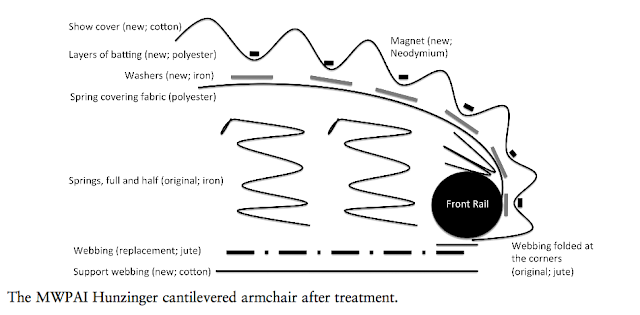Metals are grouped by their magnetic behavior, and this is an important factor in determining a magnet's effective pull force. Metals are divided into three groups:
- Ferromagnetics which are very/highly attractive
- Paramagnetics which are weakly attractive
- Diamagnetics which are opposed to magnetic fields
Of the
three metals most often magnetized—nickel, cobalt, and iron—iron alloys are the
most readily available. Among all elements, these materials can be temporarily
magnetized (also referred to as “soft” magnetization) when in proximity to a permanent magnet. (When positioned near a temporary or “soft” magnet, the permanent
or “hard” magnet creates the attachment force). But that attraction is lost once the permanent magnet is removed. One common
example is a magnetized chain of paper clips: a permanent magnet touches a
paper clip, that paper clip becomes magnetized, a second paper clip touches the
first and it also becomes magnetized, and so on. Each paper clip has become a
soft magnet, but once a paper clip is detached from the chain, it loses its
magnetization.
Steel,
composed mainly of iron and carbon, offers a wide range of characteristics
including high strength, shock resistance, and machineability. Other metals,
like manganese, silicon, chromium and molybdenum, are added to alter the
properties of the steel to make carbon steel, alloy steel, or tool steel.
However, their addition lowers the ferromagnetic properties of the material.
When a
sheet of steel is too thin, some of the magnets strength will extend behind the
steel, because the steel isn’t thick enough to hold it all. If another
ferromagnetic material is placed behind it, just like a paper clip, it too will be attracted and
become a soft magnet. In this way the magnetic field can travel to
several neighboring layers of ferromagnetic material, increasing the magnetic
force as needed. However, if the sheet of steel is thick enough, then the reverse side of the metal shows no magnetic
attraction because the steel has become fully magnetically saturated.
 |
| The arrows indicate the alignment within the domain walls |
Gauge measurement refers only to the thickness of the metal sheet, not to the percent of iron alloy or any applied coating; hence one cannot rely on a specific metal’s gauge to ensure that it will have the intended effect. Galvanizing adds to the thickness of the metal and has its own reference tables. Thus, a 24-gauge steel sheet and 24-gauge Galvanized steel sheet have different thicknesses but are equivalent magnetically.
When using rare-earth magnets, using 22-gauge or thicker is optimal (the minimum gauge steel sheet to use is 24-gauge). Selecting the best gauge of steel sheet for the magnet system is more critical than the overall weight of the mount.
It is also important that when recording your system that along with the shape, grade and size of the magnet, that the gauge and type of the ferromagnetic material (i.e. galvanized steel) is noted. Without these details the system cannot be fully documented or reproduced.
_____________________________
Gwen Spicer is an art conservator in private practice. Spicer Art Conservation specializes in textile conservation, object conservation, and the conservation of works on paper. Gwen's innovative treatment and mounting of artifacts is unrivaled. To contact her, please visit her website.
Learn more about magnets and their many uses in the new publications Magnetic Mounting Systems for Museums and Cultural Institutions. Available for purchase at www.spicerart.com/magnetbook.





